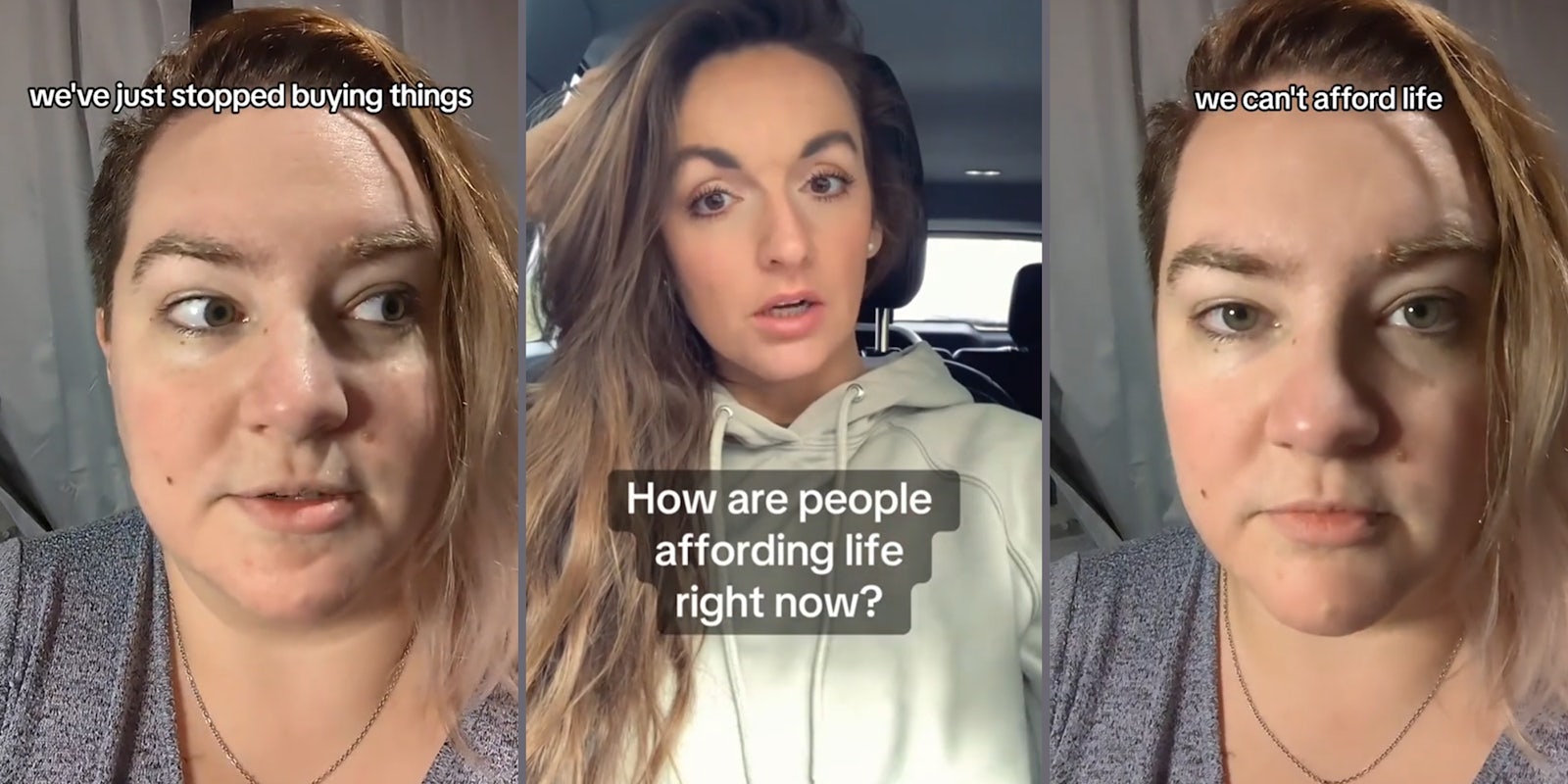It’s no secret that inflation has been a big problem in the U.S. Since 2021, tons of Americans have been feeling the fiscal sting of the cost of living expenses that have drastically spiked in recent years.
Some folks are heading to social media and hypothetically pondering just how in the world anyone can afford to live in the country anymore. A TikToker named Loc (@loc_rants) provided a simple solution: people just quit buying things.
Her clip begins with a stitch of another user on the platform who bluntly asks, “How are people affording life right now?”
Loc responds, “We can’t afford life. So we’ve just stopped. We’ve just stopped buying things.”
However, she says that there’s a plus side to this as it could mean an end to blind, ravenous consumerism.
“Which is delightful, because companies don’t know what to do about that,” she says, then asserts that consumers are purchasing fewer and fewer products in the wake of inflation because previous generations were able to enjoy certain financial benefits that simply aren’t afforded to many people today.
She highlights the difference in credit card interest rates over the years: since folks are getting hit with exorbitant interest charges, they can’t afford to place purchases on credit cards and gradually pay them off.
Wallet Hub appears to confirm that there has been a marked spike between 1991 and 2023 in average credit card interest rates from lenders. However, it seems unlikely that a 2% or 3% interest rate on credit card transactions paid over time existed during the period Loc appears to refer to. For instance, in the 1980s, according to The Baltimore Sun, the average credit card interest rate was around 17.3%. Cost of living expenditures, however, weren’t nearly as bad.
“I think it’s important to remember that our previous generations, our parents, they were able to do things like get a credit card with like a 2 and 3% interest rate so they could do things like live above their means a little bit,” she says. “Because they knew at some point they were gonna get that 2 or 3% annual raise and then be able to pay off that debt. We don’t have that. We don’t have that.”
Loc says current business models are still being structured on the idea that folks are willing to go into debt for the products and services they’d like to purchase. However, she says that this isn’t the case because there are so many Americans with outstanding student loans.
“We already have our debt, you have an entire generation of people who have entered their 30s and 40s with tens of thousands of dollars of student loan debt they will never repay because that is 7% compounding interest rate,” she says. “We’re not gonna put things on our 24% interest rate credit cards. We’re not gonna do it.”
She says that the current state of the U.S. economy has forced many Americans, like herself, into sheer survival mode, which means there’s no time, or spare cash, to engage in commerce that isn’t necessary for one to simply exist.
“So we’re not…we’re not living. We are surviving,” she continues. “And we are finding new ways to define success and we are building communities and we’re staying home and we’re going to our local libraries and we are just handmaking things and it’s gonna be what it’s gonna be. Like this year, my Christmas present to my family is the plane ticket to get there.”
@loc_rants #stitch with @Blaire ✨ Allison #millennial #america ♬ original sound – Blaire ✨ Allison
One TikToker said that the notion of a “cost of living” is, at its core, a very problematic term, writing, “‘Cost of living’ is a term that needs serious unpacking.”
Others highlighted how shoppers are wising up to marketing schemes and opting to save their cash or spend it on necessities instead.
“I work at amazon during Black Friday. It’s been so slow compared to last year. Lots of optional off time rn. We’re hurting their pockets,” one person wrote.
Another remarked, “Look at Black Friday failed miserably this year. Love it,” while someone else wrote, “And I think they’re lying about setting a record on Black Friday there’s no way.”
There are some outlets however, like Retail Dive, who are combating the notion that consumers are spending less: Black Friday sales were purportedly up 7.5% from the previous year. However, this jump is in line with inflation increases: which means that consumers have been purchasing more or less the same quantities of products: they just cost more.
According to Money, the average American, outside of any mortgages they may have, owes around $21,800 in debt. Depending on what the interest rates for these debts are, many Americans may find it impossible to pay off their loans without supplementing their income further.
The outlet went on to say that the largest source of debt Americans carry is on credit cards (28%) and Lending Tree reported that this amounts to a staggering $1.079 trillion. It’s a vicious cycle of interest compounding over time giving lenders more and more profits.
Despite the debts Americans hold, and the surge in cost of living expenditures, USA Today reports that Americans are actually spending above inflation, on average.
The Daily Dot has reached out to Loc via TikTok comment for further information.


